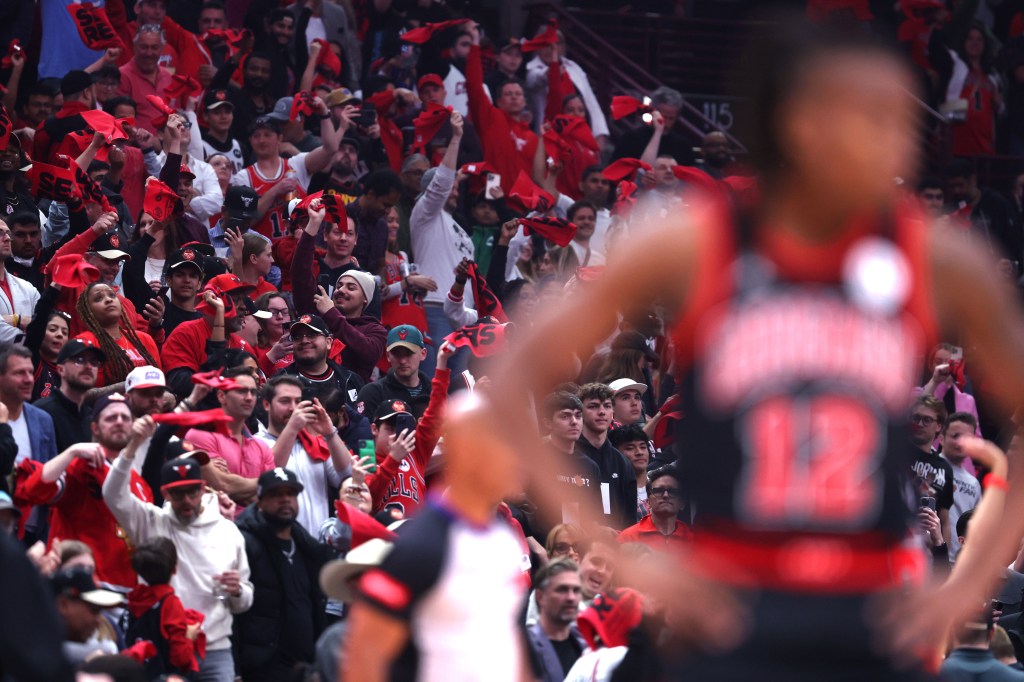The Blackhawks, Bulls and White Sox have partnered with Standard Media Group to form a new regional sports network with plans to begin broadcasting games in October, a source confirmed to the Tribune.
However, the Chicago sports teams face several hurdles.
For example, the NHL, NBA and MLB all have to sign off on the plan, so any major hiccup in a complicated agreement could scuttle the deal and the teams would have to go in a different direction, either collectively or separately.
A source also refuted a report that the trio previously had a deal in the works with Stadium Network, of which Bulls and Sox Chairman Jerry Reinsdorf owns a controlling stake.
When contacted about the move, the Hawks said in a statement that “the teams continue to have multiple conversations and will announce our plans for October once they are finalized.”
Sports leagues have been under pressure with carriers struggling to keep up with rights fees amid dwindling cable and satellite TV subscribers — or regional sports networks’ parent companies just bailing on the enterprise altogether.
The Hawks, Bulls and Sox have been broadcast through NBC Sports Chicago since 2004, but that relationship will expire on Oct. 1.
RSNs have been shrinking as broadcast groups like NBC squabble with providers like Comcast and Dish TV over revenue or as teams venture out on their own, like the Cubs did when they and Sinclair launched Marquee Sports Network in February 2020. That partnership signaled the end of seven decades of free, over-the-air broadcasts on outlets such as WGN-Ch. 9.
The trio of NBC Sports Chicago teams could face challenges in their transition.
Like all teams in this new broadcast landscape, they have to reassure their leagues about solutions to scheduling and out-of-market conflicts, and well as concerns about broadcast quality.
To reach their full market potential, the Chicago teams might need a mix of Standard, Sinclair and other broadcasters. But each of the three potential options carries its own set of concerns.
1. Cable
Based on how Comcast has previously behaved, it’s almost a certainty it would cost more for fans to tune into the same programming.
Last fall, the Seattle Kraken’s ROOT Sports Northwest, which also broadcasts the Mariners and Portland Trail Blazers, saw viewers’ monthly bill go up by $18.50 when Xfinity placed the channel in its “Ultimate TV” tier, according to the Seattle Times. The channel had been in the “Popular TV” tier.
Tuesday’s Chicago Sky preseason game will be streamed following fan outcry over broadcast access
The same happened with the Penguins’ and Pirates’ SportsNet Pittsburgh, which is also carried by Xfinity: customers saw a $20 hike in January.
Earlier this week, Comcast blacked out 15 regional sports networks under Bally Sports because of a contract dispute with distributor Diamond Sports Group.
2. Over the air
Yes, that’s a thing again.
Not quite the spindly metal “rabbit ears” of old, but some teams are turning to the modern version of the digital antenna — and it’s free.
Before last season, the Vegas Golden Knights and Scripps Sports teamed up to launch Vegas 34, which required viewers to use antennas (some TVs have them built in already) and rescan their channels.
The Utah Jazz got out of the RSN game and began offering free, over-the-air access through its traditional broadcast home, KJZZ.
3. Streaming
Not just as an alternative — but as a primary option.
In late April, Amazon announced a new partnership with the Kraken to allow Prime members in Washington, Oregon and Alaska to stream games through its Prime Video app and website, starting Oct. 4. The Kraken also broadcasts games over the air. Amazon also bought a minority stake in Diamond Sports.
But the three Chicago teams would have to find a streaming partner for those fans who don’t have or watch through TV.
Whatever form this new Standard venture takes, the Blackhawks, Bulls and White Sox will have to walk fans through a new set-up, including where to find the channel or how to install an over-the-air feed.
The new network also would allow the teams to tweak the lineup of on-air talent or change it completely.
NBC Sports Chicago produced pre and postgame shows using its own employees with some input from the Chicago teams, but until a deal is inked among the parties, it’s too soon to forecast what the lineup would look like in the future.


